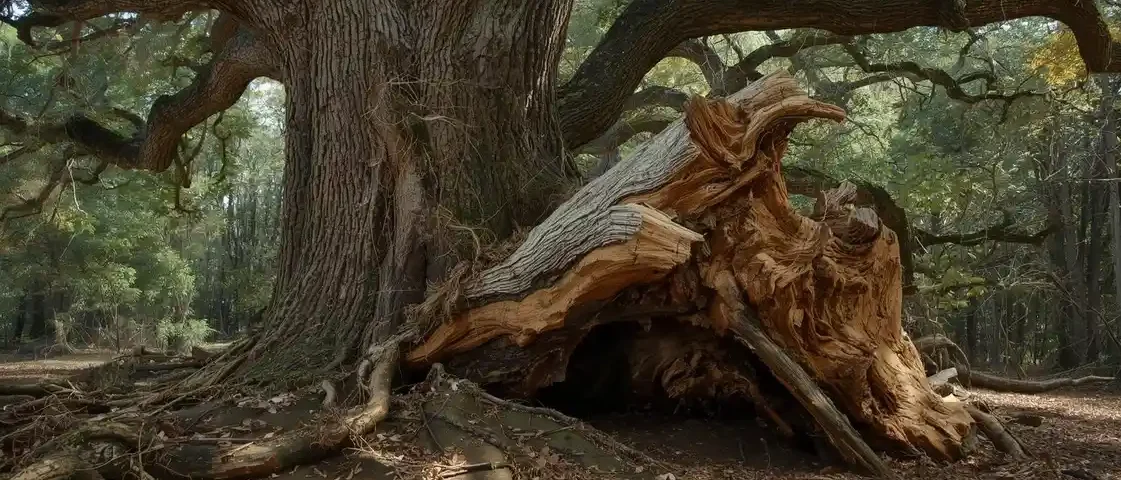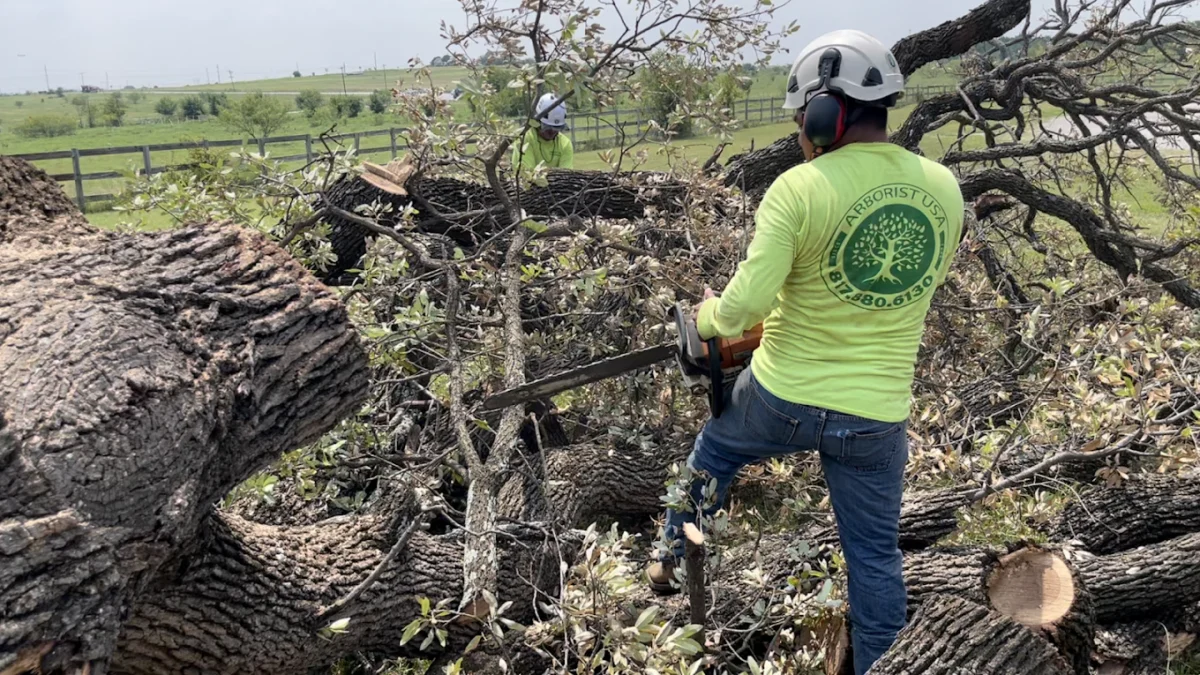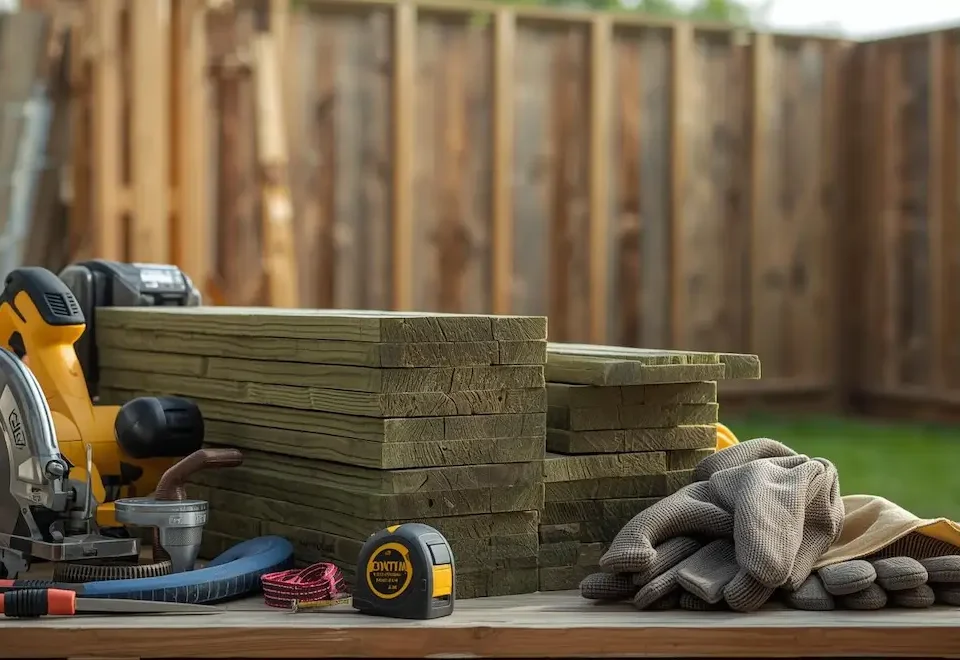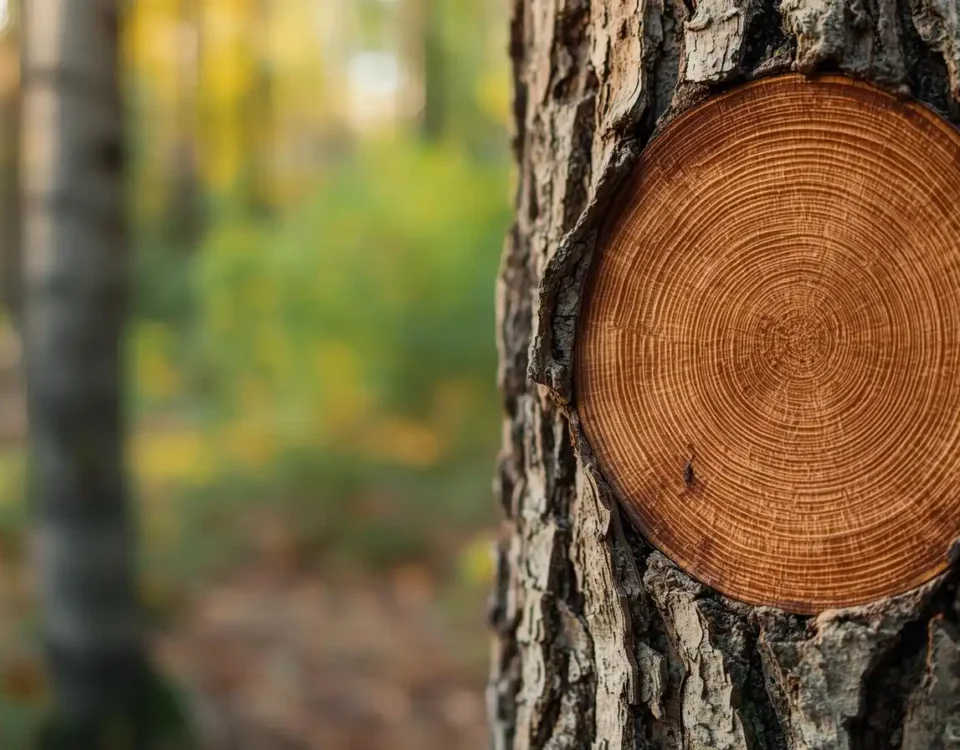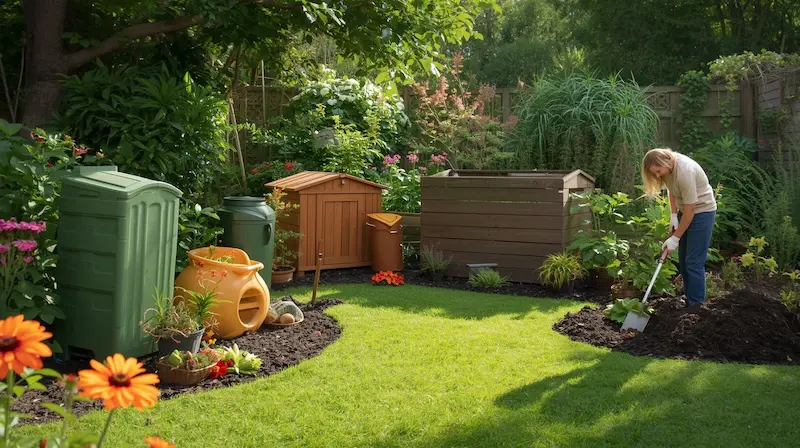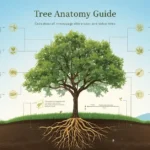
The Essential Guide to Tree Anatomy How Every Part of a Tree Works and Why It Matters
October 10, 2025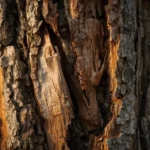
Tree Bark Peeling? A Homeowner’s Guide to Causes and Fixes
October 12, 2025Understanding, Preventing, and Managing This Unpredictable Tree Hazard
Imagine a quiet summer afternoon. The air is still, the sky is clear, and everything feels calm, until, without warning, a large, healthy-looking tree branch snaps and crashes to the ground. There’s no storm, no visible reason, just the eerie sound of breaking wood. This isn’t fiction. It’s a real and unsettling occurrence known as Sudden Branch Drop Syndrome (SBD), a mysterious phenomenon that leaves even experienced property owners startled and uncertain.
Before finding this guide, you might have felt powerless, unsure how to protect your family, your home, or your beloved trees from such an unpredictable hazard, or how to respond if it happens right in your yard.
This comprehensive guide is designed to change that, with the right garden tools.It takes you from confusion to confidence, explaining what SBD is, why it happens, and which trees are most at risk. You’ll also learn practical prevention methods and a clear, step-by-step action plan for emergencies. By the end, you’ll understand how to keep your trees healthy, safeguard your property, and restore peace of mind, so you can enjoy the beauty of your landscape without fear of the unexpected.
Understanding Sudden Branch Drop Syndrome (SBD)
What is Sudden Branch Drop Syndrome (SBD)?
Sudden Branch Drop Syndrome (SBD) is a phenomenon where large, seemingly healthy tree branches fall unexpectedly, often during hot and calm weather. What makes it so alarming is that there are usually no visible signs of decay or external stress before it happens. Homeowners often describe hearing a sharp crack followed by a heavy crash, all without wind, rain, or any clear reason for failure.
SBD stands apart from other types of branch breakage because it’s not triggered by storms, disease, or visible damage. Instead, it appears to be linked to internal stresses within the tree, often during periods of high heat and still air. This combination makes SBD both mysterious and unpredictable, a serious concern for anyone responsible for the care and safety of mature trees.
Definition and Characteristics
- Unpredictable nature: SBD occurs suddenly, without any warning or visible decay.
- Specific conditions: It most commonly strikes during hot, still summer afternoons or evenings.
- Impact: When a large branch falls without warning, it can cause serious injury, property damage, and emotional distress for homeowners who thought their trees were healthy.
The Unpredictable Nature
What makes Sudden Branch Drop Syndrome particularly unsettling is how little control property owners have over it. Trees that look strong and healthy one moment can experience a major limb failure the next, often without any prior indication. This unpredictability challenges even experienced arborists, as there’s currently no reliable method to predict which tree or branch might be next.
For homeowners and property managers, the fear stems not only from the damage a falling branch can cause but also from the uncertainty, wondering if another tree could do the same without warning. This sense of vulnerability is exactly why understanding SBD is so important.
Key Characteristics of SBD vs. Other Branch Failures
|
Characteristic |
Sudden Branch Drop Syndrome (SBD) |
Other Branch Failures (e.g., Disease, Storm) |
|
Timing |
Occurs during hot, still weather, often summer afternoons or evenings |
It can happen anytime, usually during storms, high winds, or heavy rain/snow |
|
Branch Health |
Appears healthy externally, with no visible decay or disease |
Often shows decay, disease, or insect damage |
|
Warning Signs |
None; sudden and unexpected |
Gradual signs like cracks, fungus, or deadwood |
|
Branch Size |
Typically large, horizontal limbs |
Varies from small twigs to large branches |
|
Cause |
Internal physiological or structural stress, often heat-related |
External forces (wind, ice) or pathogens |
|
Risk Factor |
High, due to unpredictability and location above active areas (yards, paths, driveways) |
Varies depending on visible symptoms and severity |
What SBD Is (and Isn't): Clarifying Misconceptions
It’s easy to confuse Sudden Branch Drop Syndrome (SBD) with other types of branch failures. After all, when a large branch crashes down, it’s natural to assume it must have been diseased, damaged, or weakened by weather. However, SBD stands apart for one key reason: it happens suddenly and without visible warning. Understanding these differences is essential for accurately assessing your trees and managing risk effectively, including specific types like ficus tree care.
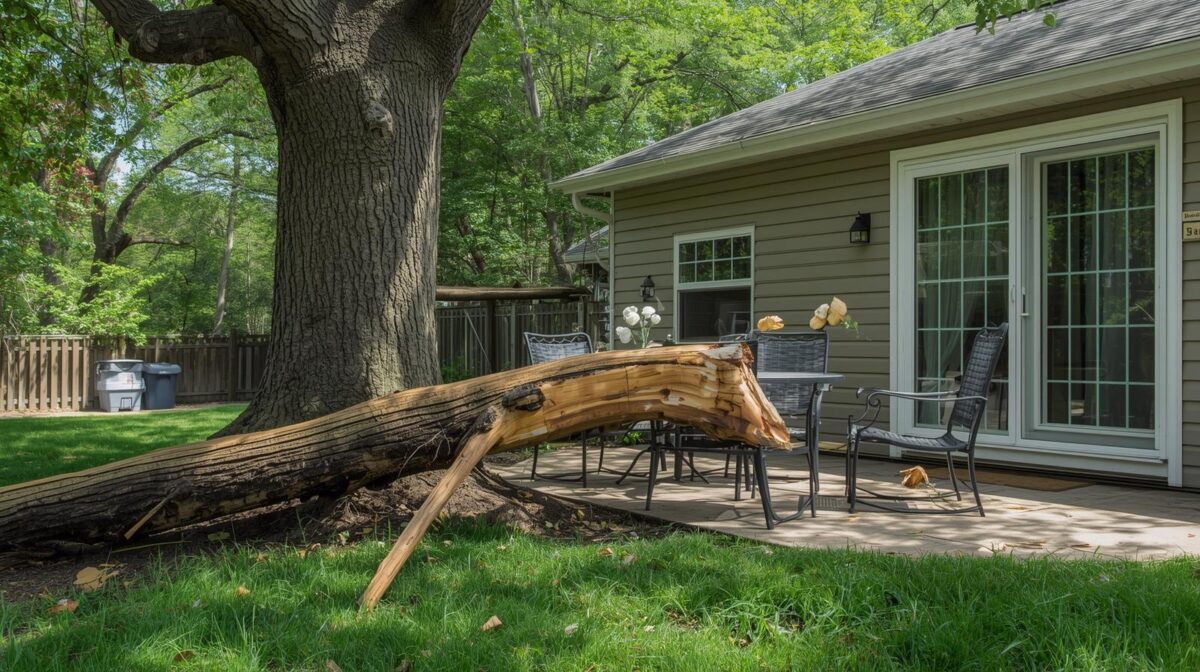
SBD vs. Disease or Decay
At first glance, a tree affected by SBD might look perfectly healthy. The bark is intact, the leaves are green, and there’s no visible sign of decay. That’s what makes it so deceptive.
- SBD: Branches appear structurally sound and free of damage, even upon close inspection.
- Disease/Decay: These failures are much easier to spot. You’ll often see fungi growing on the bark, visible cankers, insect holes, or areas of soft, rotting wood. These are gradual warning signs that signal an ongoing issue within the tree’s structure.
SBD vs. Storm Damage
Another common misconception is that SBD results from weather conditions like wind or rain. In reality, it’s quite the opposite.
- SBD: Occurs in hot, still conditions with little or no wind. The tree sheds a branch suddenly, often during the calm of the afternoon or early evening.
- Storm Damage: Caused directly by external forces such as strong winds, heavy rain, lightning, or ice. Storm damage is usually easy to recognize because branches may be torn, splintered, or scattered, and surrounding debris gives clear evidence of weather-related stress.
SBD vs. Over-Pruning Stress
Pruning mistakes can lead to branch failure, but SBD is not one of those cases.
- Over-Pruning Stress:Occurs when too many branches are cut or removed incorrectly, weakening the tree’s natural balance, which is key to mastering tree shapes. This can make it vulnerable to disease or structural failure over time.
- SBD: A distinct physiological event that happens even in well-maintained trees. While proper pruning reduces overall stress and risk, it doesn’t directly cause or prevent Sudden Branch Drop Syndrome.
SBD vs. Other Types of Branch Failure
|
Feature |
Sudden Branch Drop Syndrome (SBD) |
Disease/Decay-Related Failure |
Storm Damage (Wind/Ice) |
Structural Weakness (e.g., included bark) |
|
Primary Trigger |
Internal physiological stress (such as changes in water pressure or heat buildup) |
Pathogen infection, rot, or insect damage |
Extreme weather (high winds, heavy ice, or snow) |
Weak branch attachment points due to narrow “V” crotches |
|
Branch Appearance |
Looks healthy; green leaves and intact bark |
Deadwood, discolored leaves, fungus, or cavities |
May appear healthy or damaged, depending on storm intensity |
Often appears healthy but structurally flawed |
|
Environmental Context |
Occurs in hot, calm, still weather |
It can happen anytime, and typically develops slowly |
Linked to storms, wind, or freezing conditions |
Present at all times; failure may occur under load or stress |
|
Predictability |
Very low; almost impossible to forecast |
Moderate; symptoms can be detected through inspection |
Moderate to high; weather forecasts give a warning |
Moderate; visible to trained arborists |
|
Typical Damage Pattern |
Clean break, often near the trunk or branch crotch |
Rotting or crumbling wood at the decay site |
Ragged breaks, torn bark, and widespread damage |
Clean or jagged breaks where attachments fail |
Why This Distinction Matters
Many property owners assume that a fallen branch means their tree was unhealthy or neglected. But SBD challenges that assumption. Even the most vigorous trees can experience this phenomenon. Recognizing that SBD isn’t caused by visible decay or weather helps homeowners approach tree care more strategically, focusing not only on external signs but also on overall health, maintenance, and professional monitoring.
Understanding what SBD isn’t is just as important as knowing what it is. With this clarity, you can take a more informed, confident approach to tree safety and maintenance.
Uncovering the Triggers: Common Causes and Contributing Factors
While scientists continue to study the exact mechanisms behind Sudden Branch Drop Syndrome (SBD), research and field observations suggest that it results from a combination of internal stress factors rather than a single cause, impacting global forest counts. These triggers often overlap; environmental stress, structural weaknesses, and physiological changes can interact in ways that make an otherwise healthy tree suddenly fail.
Scientific and Environmental Factors
1. Internal Water Pressure Changes (Cavitation)
Inside every tree, an intricate system of tubes called xylem transports water from the roots to the leaves. This process relies on continuous water tension. During periods of extreme heat or drought, however, the water inside these tubes can vaporize and form air bubbles, a process known as cavitation.
When cavitation occurs, it disrupts the tree’s ability to move water efficiently. Over time, this internal imbalance increases tension and weakens branch stability. Under enough stress, the limb can suddenly give way, resulting in a dramatic and seemingly random break.
2. Heat Stress and Drought
Prolonged heat and dry conditions are two of the most common environmental triggers linked to SBD. When moisture becomes scarce, trees shift into a conservation mode, reducing water loss by closing their leaf pores (stomata). While this helps survival in the short term, it can lead to internal pressure buildup and reduced flexibility in branches.
Combined with rising temperatures, this stress can push branches to their breaking point, especially large, horizontal limbs that bear heavy loads.
Expert Tip: During long heatwaves or droughts, practice deep and infrequent watering. Soak the soil thoroughly once or twice a week rather than watering lightly every day, using mulch for garden health. This encourages deeper root growth and helps the tree withstand stress more effectively.
3. Internal Structural Defects (Micro-fractures)
Even in trees that appear perfectly sound, tiny internal fractures, called micro-fractures, can form within the wood fibers over many years. These small weaknesses often result from repeated mechanical stress, such as branch movement in the wind, or from internal drying and shrinking cycles during hot weather.
While invisible to the naked eye, these defects slowly reduce the branch’s ability to handle weight. When combined with heat stress or cavitation, the weakened area can finally give way, causing a sudden break.
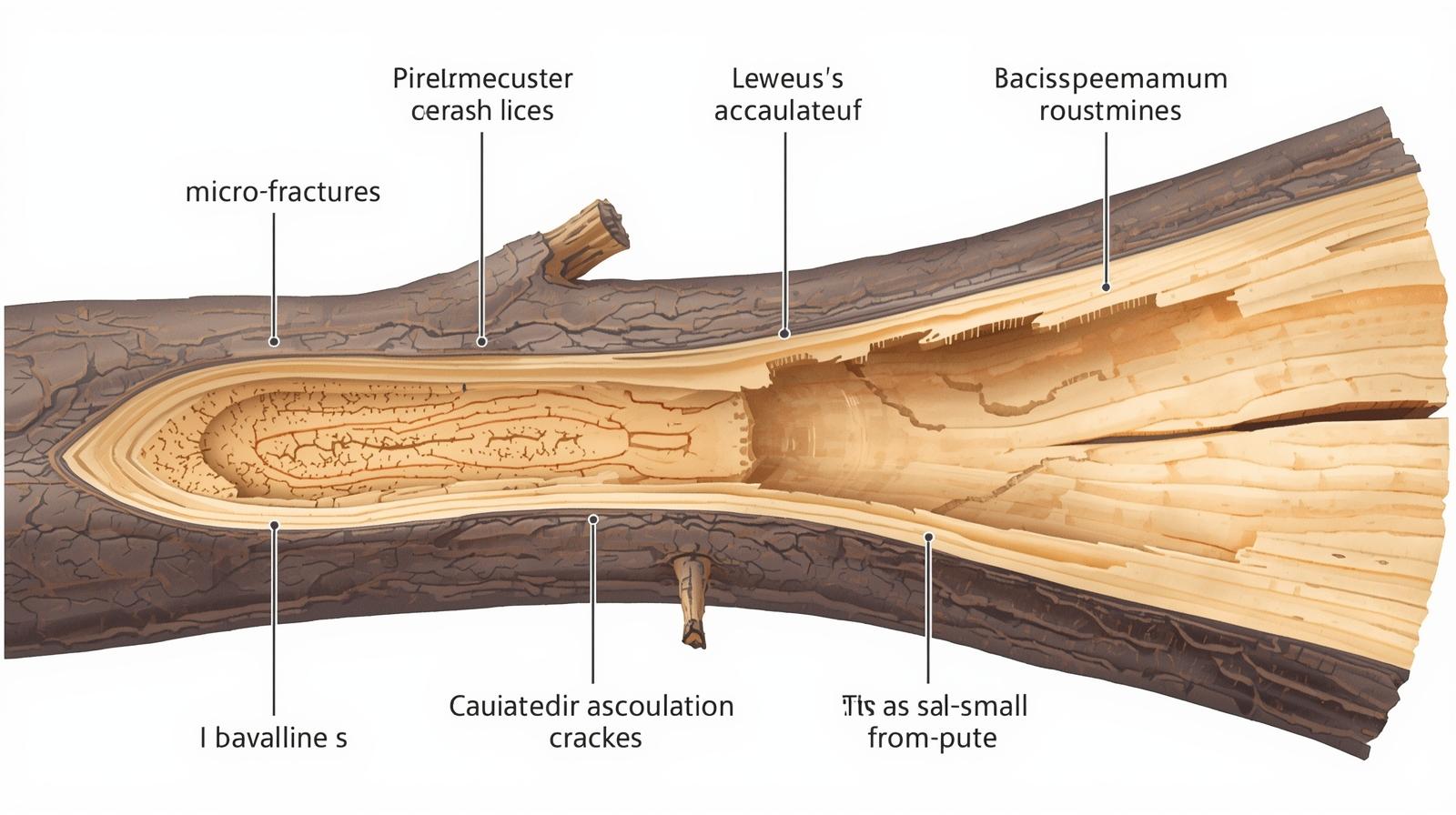
4. Physiological Mechanisms
Experts continue to debate the exact internal triggers of SBD. Some theories suggest it’s related to sudden changes in turgor pressure, the internal water pressure inside plant cells. Others propose that hormonal signals within the tree might play a role, similar to a stress response.
Another concept is autotomy, or natural self-pruning. In some species, trees may intentionally shed branches under extreme stress to conserve energy and reduce water loss. While autotomy might explain certain cases, its direct link to Sudden Branch Drop Syndrome remains uncertain.
Contributing Factors to SBD
While internal stress plays the main role, several environmental and structural conditions can increase a tree’s risk. These factors often act together, amplifying the likelihood of a sudden failure.
|
Factor |
Explanation |
Impact on SBD Risk |
|
Extreme Heatwaves |
Extended periods of high temperatures or sudden heat spikes. |
Increases internal stress and water demand within branches. |
|
Drought Conditions |
Low soil moisture reduces water availability to roots and branches. |
Exacerbates heat stress and promotes cavitation in xylem. |
|
Rapid Hydration Changes |
Heavy rainfall or irrigation following a long dry spell. |
Causes rapid internal expansion, putting extra pressure on tissues. |
|
Internal Micro-fractures |
Small, hidden cracks within the wood that build up over time. |
Weakens structural integrity, making branches prone to sudden failure. |
|
Branch Architecture |
Long, horizontal limbs with dense foliage, especially in mature trees. |
Increases leverage and mechanical stress on attachment points. |
|
Soil Compaction |
Pressed or hard soil reduces water and nutrient absorption. |
Stresses the root system, decreasing overall resilience. |
|
Previous Stress Events |
Past droughts, pest infestations, or physical damage. |
Leaves the tree more vulnerable to future failures. |
Bringing It All Together
SBD isn’t caused by one single event; it’s often the result of multiple stressors working together over time. A hot, dry season may weaken a branch internally; micro-fractures may slowly expand; then, on a calm afternoon, a sudden internal shift causes a branch to drop without warning.
By understanding these triggers, homeowners and property managers can make more informed choices about watering, maintenance, and inspections, including organic fertilizers, reducing the overall risk of sudden branch failure and protecting both their property and their trees.
Trees Most Susceptible to SBD
While Sudden Branch Drop Syndrome (SBD) can occur in a wide range of tree species, certain types are more vulnerable because of their structure, growth patterns, and natural responses to environmental stress. Mature trees with long, horizontal limbs and wide canopies tend to be at higher risk. Understanding which trees are more prone to SBD helps property owners take preventive steps before problems occur.
Common Susceptible Tree Species
Some trees are naturally predisposed to SBD due to their biology and form:
- Oaks (especially Live Oaks and White Oaks): Known for their broad, spreading canopies and heavy horizontal limbs.
- Elms: Mature elms often have large, arching branches that create wide, vase-shaped crowns, increasing internal stress.
- Eucalyptus: These trees grow fast, often with brittle wood and shedding bark, making them structurally unpredictable.
- Sycamores: Their rapid growth and wide branching patterns can sometimes outpace the wood’s ability to maintain strength.
- Ashes: Mature ash trees can develop large, heavy limbs similar to oaks and elms, creating internal water and structural stress.
- Poplars: Fast-growing trees with lower wood density, making them more prone to internal fractures and sudden failures.
General Characteristics of Susceptible Trees
Even if your specific tree species isn’t listed, certain traits can increase the risk of SBD:
- Mature Age: Older trees have heavier limbs and more internal stress from years of growth.
- Large, Horizontal Limbs: These branches bear more weight and experience higher leverage forces.
- Rapid Growth: Trees that grow quickly often develop wood with lower density, which can be structurally weaker.
- Wide, Sun-Exposed Canopies: Increased surface area absorbs more heat, raising internal temperature and stress levels.
Expert Tip: Take time to understand your tree species, their natural growth habits, water requirements, and structural tendencies. Regularly consulting a certified arborist familiar with your local climate can help identify potential risks early and guide proper maintenance practices.
Common Tree Species Susceptible to SBD
|
Tree Species |
Typical Growth Habit |
Reasons for Susceptibility |
|
Oak (Quercus spp.) |
Large, spreading canopy with long horizontal limbs |
Dense wood and heavy branches increase internal stress, especially under heat or drought conditions. |
|
Elm (Ulmus spp.) |
Broad, vase-shaped canopy in mature trees |
Wide limb span increases leverage; internal stresses can build over time. |
|
Eucalyptus (Eucalyptus spp.) |
Fast-growing, often with shedding bark and brittle wood |
Prone to internal stress and sudden limb drop due to inherent wood characteristics. |
|
Sycamore (Platanus spp.) |
Large, fast-growing, with wide branches |
Rapid growth can lead to uneven wood density and structural weakness. |
|
Ash (Fraxinus spp.) |
Can develop large, heavy canopies in maturity |
Experiences internal water pressure and stress similar to oaks and elms. |
|
Poplar (Populus spp.) |
Fast-growing, light wood; tall, upright form |
Weaker wood structure and potential for hidden defects over time. |
What This Means for Property Owners
If your landscape includes any of these species or trees with similar characteristics, extra attention is warranted. Regular inspections, proper pruning, and consistent watering practices can help reduce stress and improve overall tree health, especially for money tree care. While no method can eliminate the risk of SBD, informed care and proactive management can significantly lower the chances of unexpected branch failure.
Identifying Warning Signs (or the Lack Thereof)
When it comes to Sudden Branch Drop Syndrome (SBD), one of the biggest challenges is that it often provides no visible warning. A tree can appear vibrant and healthy, full of lush green leaves and sturdy branches, only for a large limb to break off without any apparent reason. This unpredictability leaves many homeowners feeling uneasy and unsure of what to look for.
The Unpredictable Nature of SBD
Absence of Obvious External Indicators
Branches affected by SBD often look completely normal before they fall. There are no cracks, no fungal growth, and no signs of decay or insect damage. In many cases, even trained arborists can’t identify an immediate risk during a visual inspection.
This lack of external symptoms is what makes SBD so frustrating for property owners. The event feels random and uncontrollable, creating a sense of uncertainty and helplessness, especially for those who take pride in maintaining healthy trees.
Why Prediction Is Difficult
The processes that lead to SBD happen inside the tree, hidden from view. Internal water pressure changes, heat stress, or microscopic structural weaknesses can’t be detected through simple observation. These factors interact dynamically, meaning even two trees of the same species, growing side by side, might respond differently under identical conditions.
Because of this complexity, there’s no reliable method to predict when, or if, a branch will fail due to SBD. Prevention focuses more on managing overall tree health rather than spotting specific pre-failure symptoms.
Subtle Indicators Homeowners Might Observe
While SBD itself rarely provides any visual warning, homeowners can still pay attention to general signs of tree stress. These aren’t direct indicators of SBD, but can help identify when a tree is under pressure and may need attention from an arborist.
- Premature Leaf Drop: Leaves falling earlier than usual can signal stress from drought or disease.
- Unusual Leaf Discoloration: Scorched, yellow, or brown leaves might indicate nutrient deficiencies or water stress.
- Unusual Growth Patterns: Sudden thinning in the canopy or uneven branch growth can suggest underlying issues.
- Past Drought or Pest Problems: Trees that have previously endured severe stress may be more vulnerable to structural failure.
Expert Tip: Learn to recognize subtle signs of tree stress, like early leaf drop, discolored foliage, or wilting branches, even if they’re not directly tied to SBD. Catching stress early allows you to take corrective steps before it develops into a larger problem.
Expert Tip: Keep a simple tree health log. Note any unusual behavior, such as early leaf loss or canopy changes, and take photos when possible. This record can be extremely helpful to your arborist during inspections.
Subtle Indicators of Tree Stress (Not Always SBD Warnings)
|
Indicator |
Description |
What It Might Suggest |
|
Premature Leaf Drop |
Leaves are falling earlier than normal in the growing season. |
Drought stress, nutrient deficiency, or disease. |
|
Unusual Leaf Discoloration |
Yellowing (chlorosis), browning, or leaf scorching. |
Water stress, nutrient imbalance, or pest activity. |
|
Wilting or Drooping Foliage |
Leaves appear limp or sagging, especially in hot weather. |
Severe water stress or root damage. |
|
Branch Dieback (Small) |
Small twigs or branch tips are dying back. |
Disease, insect infestation, or early decline. |
|
Delayed Bud Break |
Leaves are emerging later in spring compared to nearby trees. |
Root or soil stress from the previous season. |
|
Stunted Growth |
Smaller leaves or reduced annual growth rate. |
Chronic environmental stress or poor soil conditions. |
|
Epicormic Shoots |
Small shoots sprouting from the trunk or large branches. |
A tree under stress often reacts to canopy loss or damage. |
What Homeowners Should Take Away
The unsettling truth about SBD is that it often strikes without warning, but that doesn’t mean you’re powerless. By paying attention to your tree’s general health and responding quickly to signs of stress, you can reduce the chances of a catastrophic branch drop. Healthy trees are more resilient, better balanced, and less likely to experience sudden structural failures.
Understanding that no visible signs doesn’t mean no risk is key. When in doubt, a professional arborist’s inspection provides peace of mind and ensures your trees stay as safe and strong as possible.
The Dangers and Risks Associated with SBD
Sudden Branch Drop Syndrome (SBD) isn’t just a nuisance; it can pose serious risks to safety, property, and finances. Because it often occurs without warning, the consequences can be immediate and severe. Understanding these risks helps homeowners take the condition seriously and prepare accordingly.
High Stakes: Personal Injury and Property Damage
Risk of Personal Injury
The most alarming danger associated with SBD is personal injury. When a large limb suddenly breaks off, there’s no time to react or move out of the way. Falling branches can cause severe injuries, including head trauma, broken bones, or even fatalities. Pets, children, and anyone enjoying time beneath a tree canopy can be at risk.
Safety should always come first. Avoid sitting, parking, or playing directly beneath large trees, especially during hot, dry weather when SBD incidents are more likely.
Property Damage
When a heavy branch falls, the impact can be devastating to structures below. Homeowners commonly report damage to:
- Roofs, fences, and decks
- Vehicles parked beneath trees
- Sheds, outdoor furniture, and garden equipment
- Overhead power or internet lines
In some cases, these incidents can also lead to temporary power outages or blocked driveways, disrupting daily routines.
Financial Concerns
Beyond the immediate cleanup, SBD can lead to unexpected and costly expenses:
- Emergency tree removal or debris cleanup
- Repairs to damaged roofs, fences, or vehicles
- Potential insurance premium increases after a claim
- Professional arborist inspections or preventative pruning
For many homeowners, the financial aspect adds another layer of stress. While tree care and inspection costs can feel burdensome, they are usually far less expensive than post-incident repairs or liability claims.
Potential Legal Liabilities
Tree ownership also comes with legal responsibility. If a branch from your property causes injury or damage, you may be held liable, especially if the tree was poorly maintained or signs of decline were ignored.
However, if an incident is deemed an “act of God” (a naturally occurring event with no signs of negligence), insurance may cover the damage without assigning fault. Knowing this distinction is essential, as proactive tree maintenance often determines which category applies.
Risks and Consequences of SBD
|
Risk Category |
Specific Dangers / Consequences |
Severity |
|
Personal Safety |
Serious injury, head trauma, or fatalities involving people or pets. |
High |
|
Property Damage |
Broken roofs, damaged vehicles, fences, sheds, or disrupted utility lines. |
High |
|
Financial Burden |
Cleanup costs, repair expenses, and possible insurance rate increases. |
High |
|
Legal Liability |
Potential lawsuits if negligence in tree maintenance can be proven. |
Medium to High |
|
Emotional Distress |
Feelings of fear, anxiety, or helplessness after an incident. |
Medium |
|
Loss of Aesthetics |
Damage to mature or visually important trees affects landscape appeal. |
Low to Medium |
|
Disruption |
Power outages, blocked driveways, or interrupted daily routines. |
Medium |
Why This Matters
SBD may be unpredictable, but its consequences are very real. A single falling branch can change a quiet afternoon into a dangerous situation, causing injury, property loss, or long-term financial impact. The best protection is awareness and prevention, regular inspections, safe landscaping practices, and professional guidance from certified arborists.
By understanding the risks now, homeowners can take meaningful steps to protect their families, properties, and peace of mind later.
Prevention and Mitigation Strategies for SBD
While Sudden Branch Drop Syndrome (SBD) cannot be completely prevented, smart and consistent care can significantly lower the chances of it happening. By focusing on proper tree health, maintenance, and professional oversight, homeowners can reduce stress factors that make trees more vulnerable.
Proactive Tree Care and Management
Regular Professional Tree Assessments
The most effective step in preventing SBD is regular inspection by an ISA Certified Arborist. These professionals are trained to spot subtle structural weaknesses, internal stress symptoms, and species-specific risk factors that aren’t visible to the untrained eye.
Mature trees, especially those with large, horizontal limbs, should be inspected at least once every one to two years, or more frequently after extreme weather events such as heatwaves or droughts. Arborists look for things like canopy balance, internal decay, bark cracks, and signs of previous stress.
Expert Tip: Prioritize regular inspections by an ISA Certified Arborist, especially for mature trees, as SBD often gives no external warning signs.
Proper Pruning Techniques
Thoughtful pruning can greatly reduce branch weight, improve airflow, and minimize the chance of limb failure. Remove dead, diseased, or weak branches before they become hazards. Thinning out dense canopies also reduces the overall weight on large limbs and allows better heat dissipation during hot spells.
Avoid the practice of tree topping, which weakens branch structure and leads to poor regrowth. Pruning should always be done with care and proper tools, or, preferably, by a professional when dealing with larger trees.
Expert Tip: Avoid “tree topping” or improper pruning techniques, which can weaken branch structure and increase susceptibility to SBD.
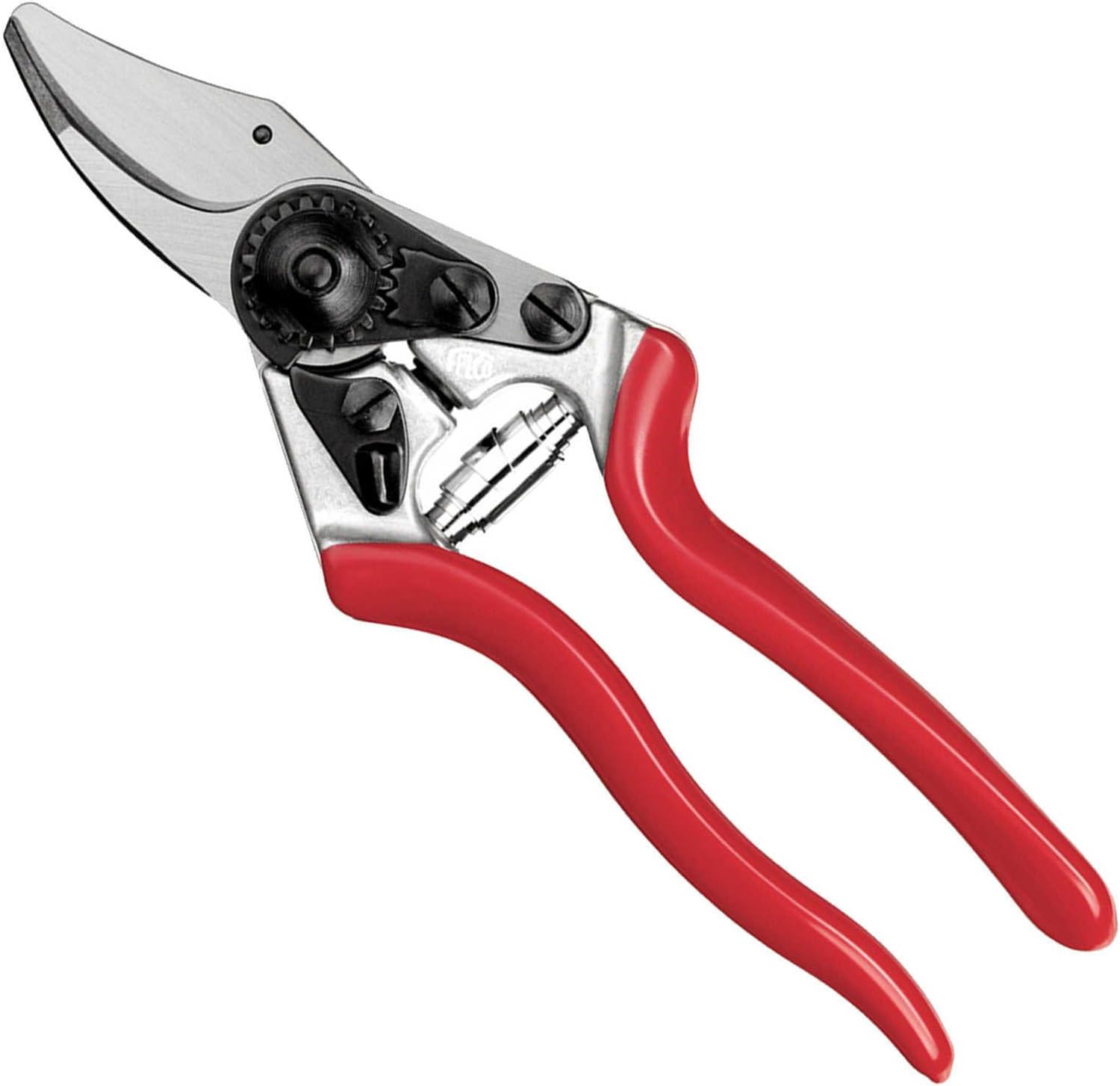
Felco F6 Pruning Shears – 7.7" Swiss-Made Garden Clippers for Medium Hands | Hand Pruners for Gardening |
Effective Watering Strategies
Water management plays a critical role in tree health, especially during dry or hot periods. Deep and infrequent watering encourages deep root growth and builds drought resistance. Shallow, frequent watering does the opposite, making trees more dependent on surface moisture and more vulnerable to heat stress.
Use a soil moisture meter to understand your soil’s hydration levels, and adjust watering accordingly based on the tree species and local climate.
Expert Tip: Implement deep and infrequent watering during prolonged dry spells or heatwaves to encourage robust root development and reduce tree stress.
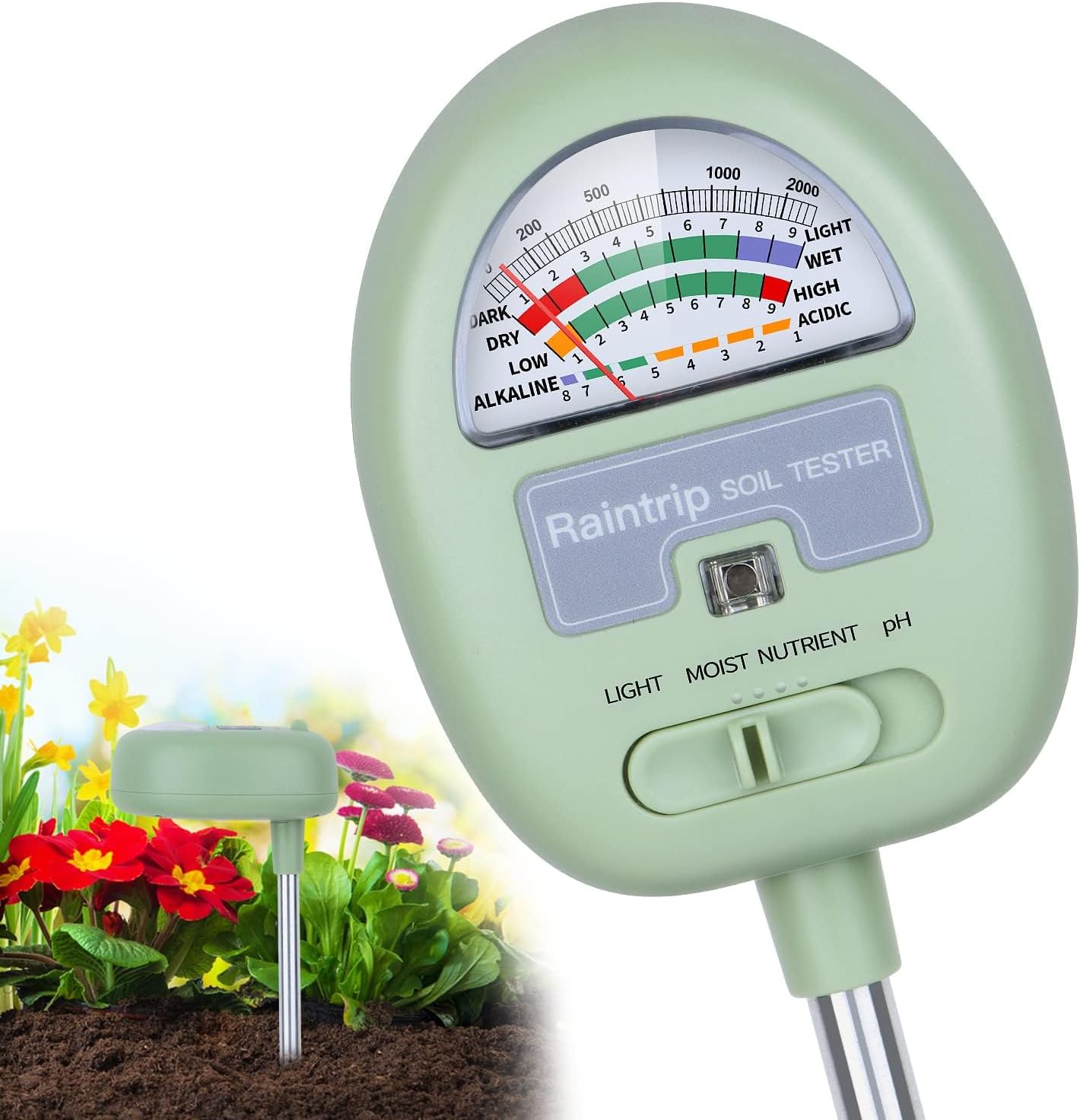
Soil Moisture Meter, 4-in-1 Moisture Meter for Plants, Tester for Moist, Light,Nutrients, pH, Soil Test Kit, Great for Garden, Lawn, Farm, Indoor & Outdoor Use, No Battery Required
Soil Health and Compaction Management
Healthy soil allows roots to breathe and absorb nutrients efficiently. Compacted soil, often caused by foot traffic or heavy equipment, restricts root growth and reduces water penetration. Mulching with organic material around the tree’s drip line helps maintain moisture, moderate soil temperature, and reduce compaction.
Avoid piling mulch against the trunk, as it can lead to decay.
Choosing Climate-Appropriate Species
Tree species that are native or well-suited to your region naturally adapt better to local conditions. They handle heat, drought, and rainfall patterns more effectively, reducing overall stress. When planting new trees, choose species known for structural strength and climate resilience.
Expert Tip: Choose native, climate-appropriate tree species when planting to ensure better resilience to local environmental stressors.
Tree Support & Bracing Systems (Professional Installation)
For trees with visible structural weaknesses or heavy horizontal limbs, a certified arborist may recommend installing support cables or bracing rods. These systems help redistribute mechanical stress and provide added safety.
Such measures should only be installed by professionals, as incorrect installation can cause further damage or create new failure points.
Product Recommendation: Tree Support & Bracing Systems (installed by certified professionals).
🌳 SBD Risk Assessment Checklist
Is your tree at risk? Let's find out in 2 minutes.
What type of tree is it?
How mature is the tree?
Have you noticed any of these?
(Select all that apply)
Recent environmental conditions?
(Select all that apply)
Your SBD Risk Assessment
Based on your answers, your tree appears to be at:
Recommended Actions:
What to Do Immediately After an SBD Incident
When a branch suddenly falls, quick and safe action is crucial. Your priority should always be the safety of people and pets, followed by securing the area and contacting the right professionals.
Step-by-Step Emergency Response
- Ensure Safety First
Move everyone, including pets, away from the affected area immediately. Assume that other branches could also be compromised, especially if the tree experienced sudden stress. Safety is the number one priority before assessing damage or touching anything. - Secure the Area
Establish a safe perimeter using safety cones, barrier tape, or even temporary physical barriers. Warn neighbors or passersby to keep them away from potential hazards. - Assess for Immediate Dangers
Check for:
- Downed power lines – do not touch under any circumstances. Contact your utility company immediately.
- Structural damage – inspect your home, vehicles, and nearby structures from a safe distance.
- Document the Incident
Capture clear photos or videos from multiple angles. Note the date, time, weather conditions, and any visible property damage. This documentation is crucial for insurance claims and professional assessments. - Contact Professionals
- Call a certified arborist to safely remove the branch and assess the remaining tree.
- Contact the utility company first if lines are involved.
- Notify your insurance company about any property damage.
Expert Tip: Never try to remove large branches yourself. Doing so without the proper equipment and experience can be extremely dangerous. Always rely on professionals for safe cleanup.
Immediate Action Checklist Post-SBD
|
Action |
Description |
Priority (1=Immediate) |
Notes |
|
Secure Area |
Move people and pets away; establish a safety perimeter with barriers. |
1 |
Assume instability; other branches may also fall. |
|
Check for Hazards |
Look for downed power lines, gas leaks, or structural damage. |
1 |
DO NOT TOUCH power lines; call the utility company. |
|
Document Damage |
Take photos/videos of the tree, branch, and any property damage. |
2 |
Essential for insurance claims. |
|
Contact Professionals |
Call a certified arborist for safe removal and assessment. |
1 |
Also, contact the utility company (if lines are down) and insurance. |
|
Notify Neighbors |
Inform adjacent property owners if the incident affects them. |
3 |
Courtesy and safety precaution. |
|
Clear Debris (Small) |
Only remove small, manageable debris without power tools. |
4 |
Avoid large branches or chainsaws; leave major cleanup to pros. |
When to Call a Professional Arborist
Knowing when to seek expert help is critical for both preventing Sudden Branch Drop Syndrome (SBD) and responding safely if it occurs. Certified arborists provide the training, tools, and experience needed to assess risks, manage tree health, and safely handle potentially hazardous branches.
Situations Requiring Expert Intervention
- Routine Tree Health Assessments
Even if your trees appear healthy, regular inspections by an ISA-certified arborist can detect subtle issues before they become serious problems. Annual or biennial check-ups are especially important for mature or high-value trees.
Product Recommendation: Professional Arborist Consultation Services (e.g., ISA Certified Arborists).
- Post-Incident Assessment
After a sudden branch drop, a professional is essential to:
- Safely remove the fallen branch.
- Examine the parent tree for structural weaknesses or other risks.
Calling an arborist immediately can prevent further incidents and protect people and property.
- Signs of Tree Stress or Disease
If you notice discolored leaves, dieback, stunted growth, or unusual canopy patterns, it’s time to consult an arborist. Early diagnosis of disease, pests, or environmental stressors can save trees and reduce the risk of branch failure.
- Complex Pruning or Removal
Large branches, significant canopy thinning, or full tree removal should never be attempted by homeowners, especially if it involves climbing, power lines, or heavy equipment. A certified arborist ensures proper techniques and safety.
- Installation of Support Systems
Bracing or cabling structurally weak trees requires professional assessment and installation. Incorrect installation can worsen structural integrity, so always rely on certified arborists for these solutions.
Product Recommendation: Tree Support & Bracing Systems, installed by professionals.
- New Tree Planting Consultation
An arborist can recommend:
- Species suited to local climate and soil conditions.
- Optimal planting locations for long-term health and safety.
Expert Tip: For large properties, consider maintaining a comprehensive tree inventory tracking species, age, and health to guide ongoing care and risk management.
Situations Requiring a Professional Arborist
|
Situation |
Why an Arborist is Essential |
Homeowner Action |
|
Routine Inspections |
Early detection of subtle issues and proactive risk assessment. |
Schedule regular check-ups, especially for mature trees. |
|
After a Branch Drop |
Safe removal of fallen limbs and assessment of the remaining tree. |
Call immediately after an incident. |
|
Visible Tree Stress |
Diagnosis of diseases, pests, or environmental stressors. |
Contact for evaluation if you notice unusual symptoms. |
|
Large Branch Pruning |
Proper cuts to reduce weight while maintaining tree health. |
Never attempt significant pruning yourself. |
|
Tree Removal |
Safe and efficient removal of hazardous or dead trees. |
Essential for large or structurally compromised trees. |
|
Bracing/Cabling Installation |
Correct installation of support systems to prevent failure. |
Only a professional can install safely. |
|
Planting Consultation |
Choosing appropriate species and location for long-term health. |
Consult before planting new mature trees. |
|
Construction Near Trees |
Assessing root damage and implementing protective measures. |
Call if construction occurs near tree root zones. |
Frequently Asked Questions (FAQs) about Sudden Branch Drop Syndrome (SBD)
Common SBD Myths Debunked
|
Myth |
Fact |
|
Only unhealthy trees experience SBD. |
SBD often affects seemingly healthy branches from robust trees. |
|
You can always see warning signs before SBD. |
SBD is defined by suddenness; visible signs are typically absent. |
|
SBD is caused by strong winds. |
SBD usually occurs in calm, still weather; strong winds cause storm damage. |
|
All large trees are equally susceptible. |
Certain species and mature trees with specific growth habits are more prone. |
|
Removing a tree’s canopy (topping) prevents SBD. |
Topping weakens trees, making them more likely to fail. |
|
SBD is rare, so I don’t need to worry. |
While uncommon, the consequences are serious enough to warrant awareness and preventive measures. |
Conclusion
Sudden Branch Drop Syndrome is a complex and unpredictable phenomenon, but homeowners and tree enthusiasts are not powerless against it. By understanding what contributes to SBD, recognizing which trees are most susceptible, and implementing proactive care strategies, you can significantly reduce risks while promoting healthier, stronger trees.
Prioritizing regular inspections by certified arborists, practicing proper pruning techniques, providing deep and infrequent watering, and responding swiftly and safely to any incidents ensures both safety and tree longevity. Your informed approach to tree care not only protects your property and loved ones but also preserves the beauty and vitality of your trees for years to come.


